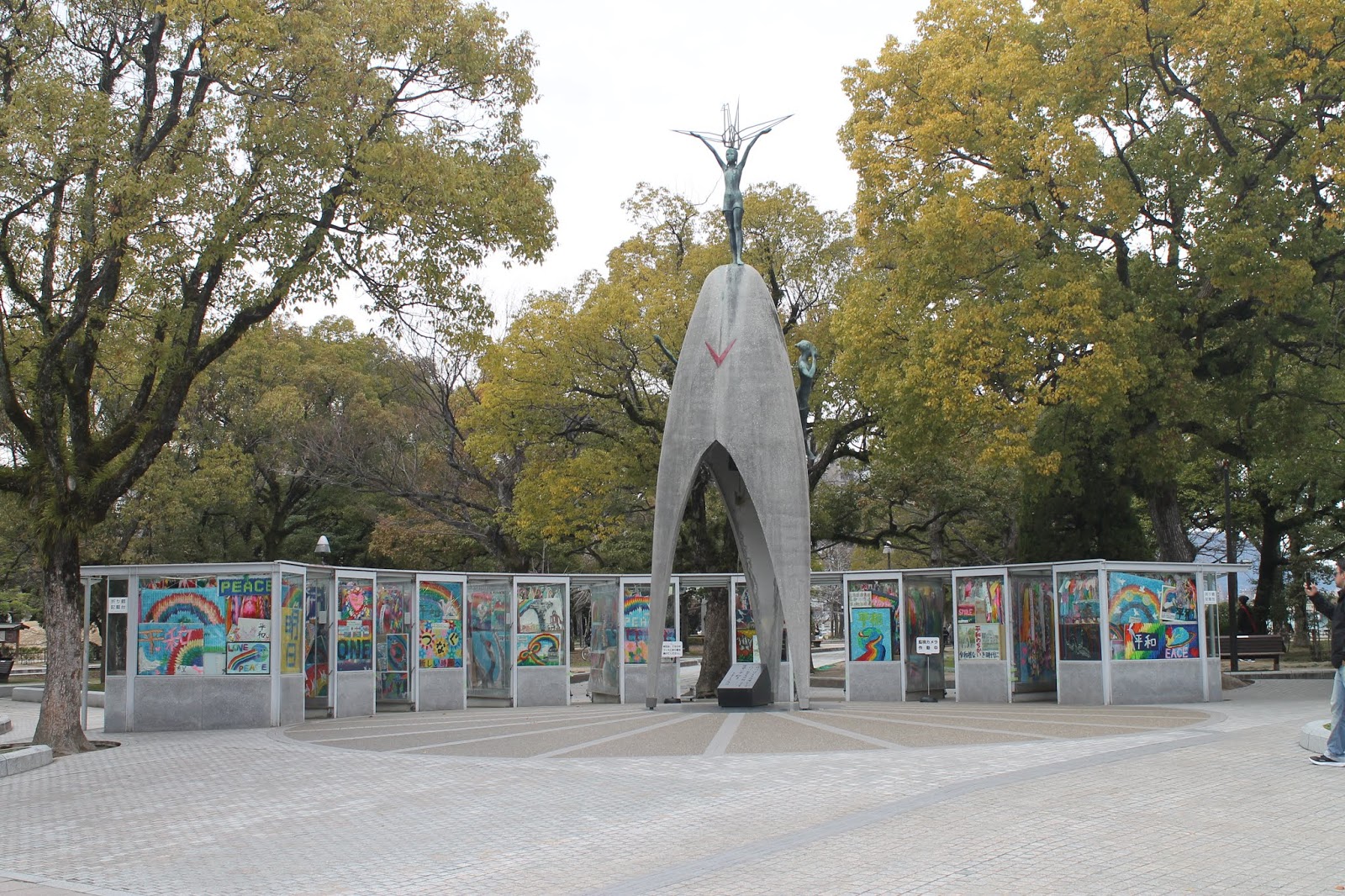Hiroshima Peace Memorial Park is a memorial
park in the center of Hiroshima, Japan. It is dedicated to the legacy of
Hiroshima as the first city in the world to suffer a nuclear attack, and to the
memories of the bomb's direct and indirect victims (of whom there may have been
as many as 140,000). The Hiroshima Peace Memorial Park was planned and designed
by the Japanese Architect Kenzō Tange at Tange Lab. The location of Hiroshima
Peace Memorial Park was once the city’s busiest downtown commercial and
residential district. The park was built on an open field that was created by
the explosion.
Near the center of the park is a concrete,
saddle-shaped monument that covers a cenotaph holding the names of all of the
people killed by the bomb. The monument is aligned to frame the Peace Flame and
the A-Bomb Dome. The Memorial Cenotaph was one of the first memorial monuments
built on open field on August 6, 1952. The arch shape represents a shelter for
the souls of the victims. The cenotaph carries the epitaph 安らかに眠って下さい 過ちは 繰返しませぬから. The epitaph was written by Tadayoshi Saika, Professor of English
Literature at Hiroshima University. He also provided the English translation,
"Let all the souls here rest in peace for we shall not repeat the
evil."
The Peace Flame is another monument to the
victims of the bomb that destroyed Hiroshima, but it has an additional symbolic
purpose. The flame has burned continuously since it was lit in 1964, and will
remain lit until all nuclear bombs on the planet are destroyed and the planet
is free from the threat of nuclear annihilation.
The Children's Peace Monument is a statue
dedicated to the memory of the children who died as a result of the bombing.
The statue is of a girl with outstretched arms with a folded paper crane rising
above her. The statue is based on the true story of Sadako Sasaki, a young girl
who died from radiation from the bomb. She is known for folding over 1,000
paper cranes in response to a Japanese legend. To this day, people (mostly
children) from around the world fold cranes and send them to Hiroshima where
they are placed near the statue. The statue has a continuously replenished
collection of folded cranes nearby.














